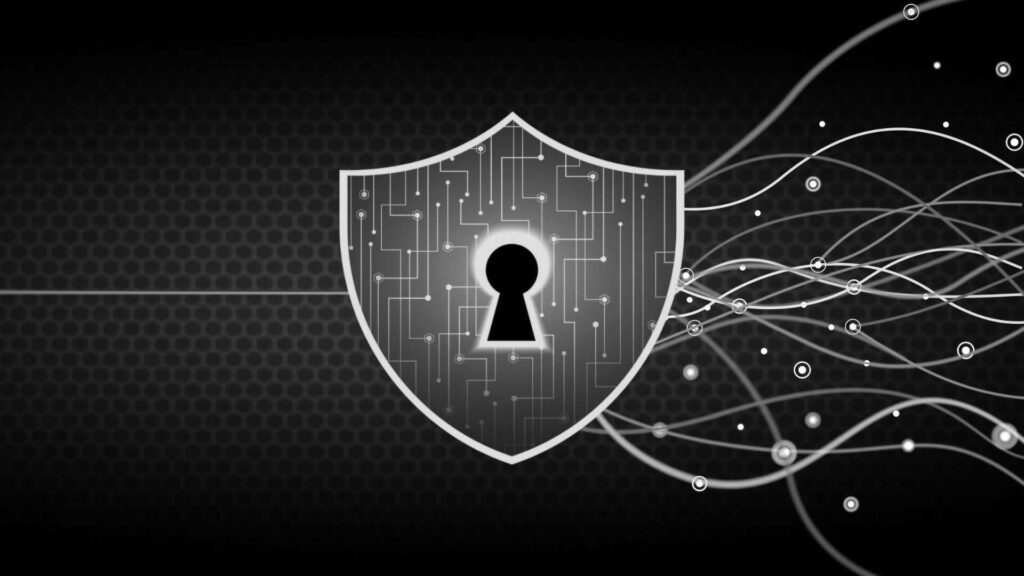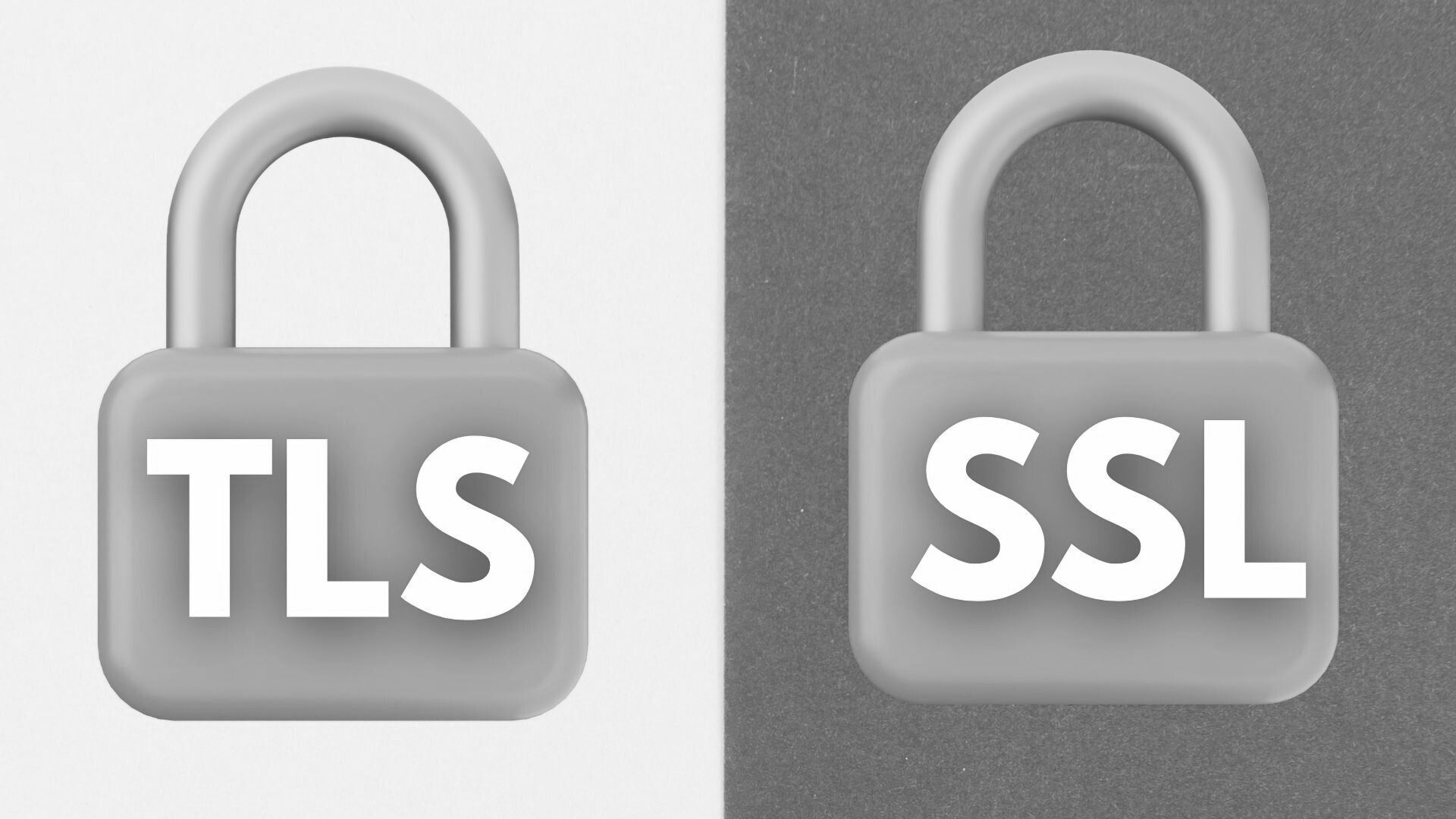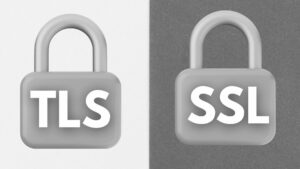Key Takeaway:
TLS is the modern, secure protocol that replaced SSL, which is now deprecated due to known vulnerabilities. Although still called “SSL certificates,” all current certificates operate using TLS. The key difference lies in protocol versions, encryption strength, handshake process, and ongoing support – TLS 1.2 and TLS 1.3 are the recommended standards for secure communication.
Online security relies on cryptographic protocols, and while most websites claim to use an SSL certificate, it’s actually TLS that does the work. If your brand relies on secure communication, your team must know the difference between SSL and TLS as a top priority.
To help you safeguard your brand’s online presence, we at EBRAND offer a free brand audit that maps your digital footprint and flags impersonation or phishing threats.

The Evolution from SSL to TLS
The Secure Sockets Layer (SSL) protocol was originally developed to encrypt communication between web browsers and servers. SSL 2.0, released in 1995, was the first widely used version, but it contained significant vulnerabilities. Version 3.0 addressed many of these issues, but was eventually found to be insecure as well. Both SSL 2.0 and 3.0 are now deprecated.
Transport Layer Security (TLS) was introduced as the successor to SSL. TLS 1.0, released in 1999, retained the core architecture of SSL but improved its encryption capabilities. TLS 1.1, 1.2, and 1.3 have continued to refine the protocol, making it faster, more secure, and more adaptable to modern cryptographic requirements. Today, it is the modern standard for encrypted communication.
Technical Differences
While TLS and SSL are both cryptographic protocols that encrypt data between a server and a web browser, their technical foundations differ significantly. TLS supports newer, more secure encryption algorithms, including AEAD ciphers and modern elliptic curve cryptography. SSL relies on outdated algorithms that no longer meet today’s security standards.
Another major difference between TLS and SSL lies in the handshake process. The SSL handshake is slower, less flexible, and more vulnerable to downgrade attacks. TLS uses a more efficient handshake process, especially from version 1.2 onwards, supporting features such as forward secrecy and session resumption. TLS also provides stronger authentication methods and certificate validation mechanisms.
Both protocols use digital certificates issued by certificate authorities to authenticate the server and establish a secure connection. However, TLS certificates benefit from better algorithm support, better cipher suite negotiation, and more secure key exchange methods.
Here’s a side-by-side comparison to summarize the core differences between SSL and TLS:
| Feature | SSL ( 2.0 / 3.0) | TLS (1.0–1.3) |
| Encryption Algorithms | Outdated and vulnerable | Modern and secure (e.g., AES, ChaCha20) |
| Handshake Process | Slower, vulnerable to attacks | Faster, supports forward secrecy |
| Certificate Support | Basic digital certificate validation | Stronger authentication and algorithms |
| Protocol Flexibility | Limited cipher suite negotiation | Robust negotiation and fallback options |
| Security Status | Deprecated, no longer supported | Actively maintained and recommended |
| Browser/Server Support | Disabled by most modern systems | Fully supported by modern systems |
| Versions Available | SSL 2.0, SSL 3.0 | TLS 1.0, 1.1, 1.2, 1.3 |
| Usage in Certificates | Legacy term still used | Actual protocol behind today’s certificates |
Why the Term ‘SSL Certificate’ Is Still Used
Even though TLS is the protocol in use today, the term “SSL certificate” remains widely used in marketing and technical documentation. This leads to confusion for many users who assume they are installing an SSL certificate that uses the SSL protocol.
In reality, when you install a Secure Sockets Layer certificate today, whether a wildcard or a domain-specific certificate, it’s TLS that handles the secure communication. The certificate still performs the same function: it authenticates the server and enables encryption, but under the TLS protocol. Most SSL certificates and TLS certificates are essentially the same in function, but “SSL” persists as a legacy naming convention.
How SSL and TLS Work in Practice
Both SSL and TLS protocols enable secure connections using a multi-step process that involves server authentication, encryption setup, and secure data transmission. During the handshake process, the server presents its digital certificate to the client, which is verified using the public key infrastructure and trusted certificate authorities.
If authentication is successful, a shared session key is negotiated using a cryptographic algorithm, which then encrypts all communication between the client and the server. While the SSL handshake used to perform this role, the TLS handshake process has replaced it in modern secure communication.
TLS 1.2 and 1.3 also support newer cryptographic algorithms and remove outdated features that made earlier SSL versions vulnerable. TLS is used in HTTPS-based secure communication, email encryption, and other protocols, while SSL is no longer considered safe for any type of transmission.
Security and Compatibility: SSL Deprecation vs TLS Adoption
SSL is now considered obsolete. SSL 2.0 and 3.0 are officially deprecated, and most major web browsers and servers have disabled support for them. TLS 1.0 and 1.1 were also formally deprecated, but some legacy systems still support them. The recommended standards are TLS 1.2 and 1.3, which offer better encryption, shorter handshakes, and improved security.
TLS is the updated version of SSL in every functional sense. It supports modern authentication, robust encryption, and flexible protocol negotiation. Today’s secure certificates work over the TLS protocol by default. In fact, the SSL certificates that EBRAND issues with our clients all come with TLS encryption by default. Ultimately, TLS is the protocol that enables HTTPS encryption across the web.

Modern TLS Certificates and Certificate Management
Although the term “SSL certificate” still appears in dashboards, control panels, and product names, all certificates in use today rely on TLS. Whether you use a standard or wildcard Secure Sockets Layer certificate, the underlying encryption occurs via the TLS protocol.
Certificate management involves acquiring a certificate from a trusted certificate authority, installing it on your server, and ensuring timely renewals, particularly as industry standards regarding SSL certificate lifespans evolve. Implementing TLS also means staying current with the latest TLS version and disabling insecure versions of SSL or TLS.
When you install an SSL certificate today, you’re really implementing TLS encryption, because TLS is the cryptographic protocol that encrypts data, authenticates the server, and ensures secure communication.
Conclusion
The key differences between TLS and SSL lie in security, protocol design, and long-term viability. While SSL once set the standard for encrypted connections, its vulnerabilities led to deprecation. Today, its successor is not just more secure, but actively maintained and widely supported.
Despite the continued use of the term “SSL certificate,” it’s the newer protocol that handles encrypted communication across the web. If your systems still rely on outdated technology or ambiguous configurations, upgrading to the latest version is critical. Legacy methods no longer offer adequate protection; modern certificate deployment should be built entirely on current, secure protocols.


